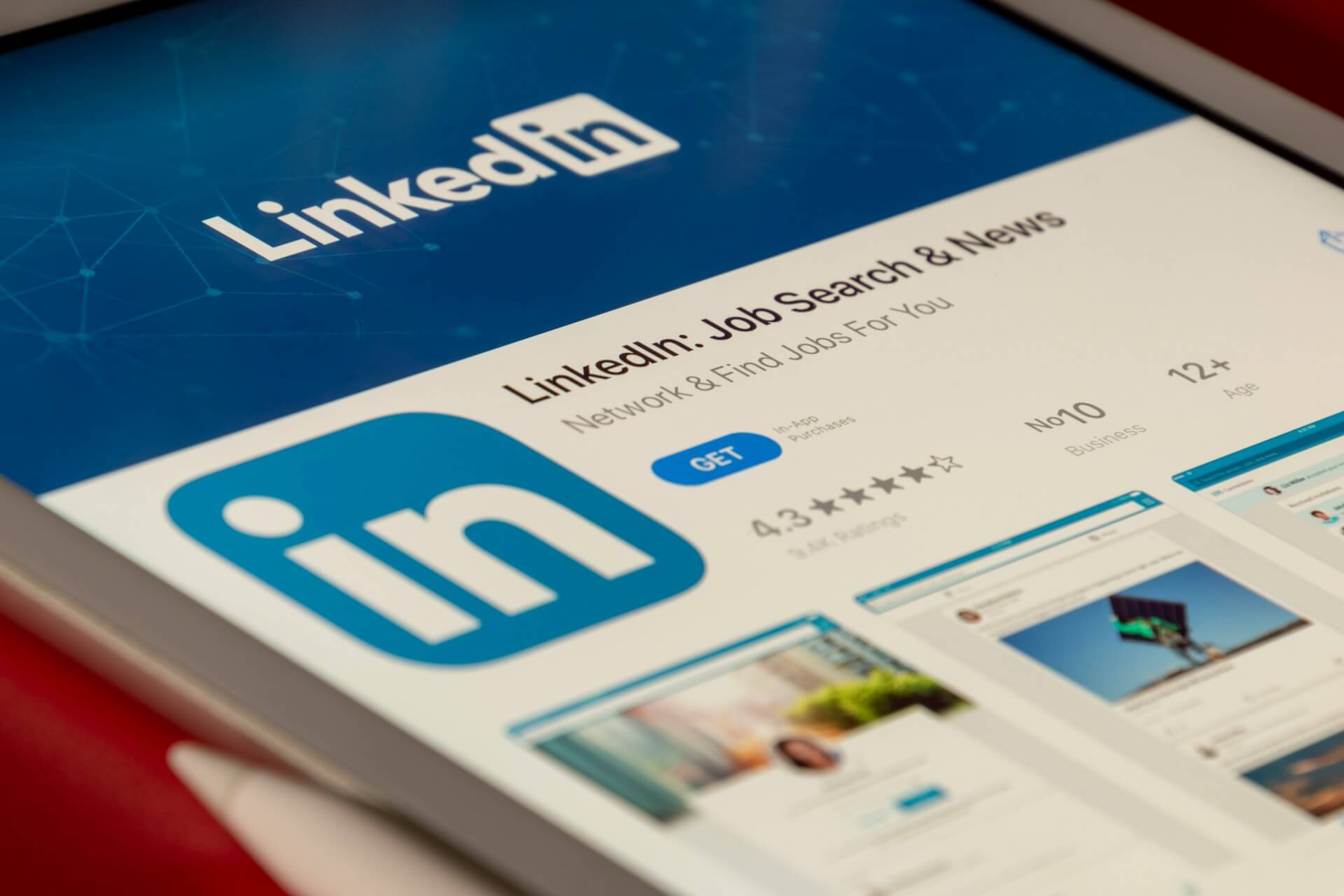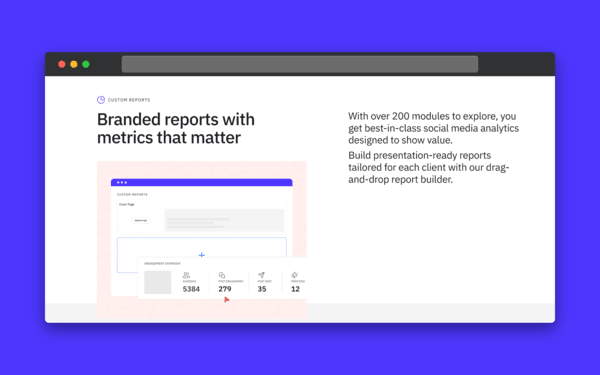Sendible insights Your 2025 Guide to LinkedIn Metrics: Everything You Need to Know
With more than 20 years in existence, availability in 25 different languages, LinkedIn is a marketing tool that marketers simply can't miss out on in 2025.
If you're reading this article, chances are you have realized that and are now looking into how to best market and track your ROI on LinkedIn for your brand.
Well, look no further. This guide was made just for you.
This guide contains:
Let's dive right in!
Why is ROI so important?
If you have any kind of marketing budget, you should be tracking your ROI. And what is ROI, you may ask? ROI stands for return on investment, and marketers must be in the loop on how it works. ROI is a metric that represents the financial gain or loss generated from a specific investment relative to its cost.
In marketing, ROI serves as a performance indicator, which helps marketers and social media managers assess the effectiveness and profitability of campaigns or initiatives. It is calculated by dividing the net profit gained from the investment by the cost of the investment and is often expressed as a percentage.
A positive ROI indicates that the campaign generated more revenue than it cost, which shows a successful and profitable venture. ROI is helpful to make informed decisions about resource allocation, budgeting, and strategy optimization.
By understanding the return on their marketing efforts, you can identify high-performing channels, campaigns, and tactics so you can allocate resources efficiently and maximize the impact of their marketing budget.
Ultimately, ROI provides valuable insights into the success and efficiency of your marketing strategy, helping you guide your decision-making and lead your brand to success.
What is LinkedIn Analytics?
LinkedIn Analytics is a set of tools and data insights designed to help you measure the performance and impact of your activities on the LinkedIn platform. These analytics offer valuable information about the reach, engagement, and effectiveness of your content and marketing efforts on LinkedIn. Key metrics typically include profile views, post views, engagement (things such as likes, comments, and shares), follower growth, and demographic data about the audience.
LinkedIn Analytics is a key tool for marketers for several reasons:
Performance Measurement: You can track the performance of your LinkedIn profiles and content to understand which posts resonate most with your audience and contribute to your overall marketing goals.
Audience Insights: LinkedIn Analytics provides demographic information about the audience so you can understand the characteristics of your followers. This data is valuable for refining targeting strategies and creating content that appeals to your audience's specific interests and needs.
Content Strategy Optimization: By analyzing the performance of individual posts, you can identify content types, formats, and topics that are most effective in engaging your target audience. Plus, you can tap into the best time your audience engages with your posts to strategize the best time to get your content out there.
With our LinkedIn scheduling tool, you can set your posts to go out when your audience will pay the most attention. This insight helps to refine content strategies for better engagement and reach.
Follower Growth: Monitoring follower growth over time helps you understand the impact of your activities on building an audience and provides insights into the effectiveness of different growth strategies.
ROI Evaluation: LinkedIn Analytics contributes to the overall evaluation of the return on investment for LinkedIn marketing efforts. You can assess whether your time and resources invested in LinkedIn activities translate into meaningful outcomes, such as increased brand visibility, lead generation, or business partnerships.
LinkedIn Analytics empowers you with data-driven insights to refine your strategies, enhance content effectiveness, and make informed decisions to achieve your marketing goals on the LinkedIn platform.
8 LinkedIn Analytics You've Got to Measure
Creating fresh content that resonates with your target audience can be a challenging task. So, knowing when and how to measure your success is important to tracking all your efforts and knowing if you’re on the right track.
That's why knowing where and how to pull LinkedIn Analytics is so important!
One of the quickest and easiest ways to pull the data you need is to use our reporting hub. With one click of your mouse, you can quickly generate in-depth reports not only for LinkedIn but also for Facebook, Instagram and more. Our system allows you to gain insight into your audience and post engagement across several different channels all in one report.
Plus, you can tailor the report to be sent automatically to your clients so there is less work for you. The simplicity of our reports was created with the business of today's day and age in mind, so every report is easy to pull.
Let's take a look at the top 8 analytics you should measure on LinkedIn and why they’re important:
#1 Engagement rate
If you want to grow your brand and your LinkedIn account, the engagement rate should be one of the first things you are measuring. The LinkedIn engagement rate is the percentage of your followers that interact with your post in some way. This could be by liking your post, commenting on your post, sharing, clicking on a link, or many other options. Essentially, the engagement rate shows you who interacted with your brand on some level.
Having a high engagement rate is important because if you have a high engagement rate, your posts will generally rate higher, so you will end up reaching more people.
#2 Follower growth
Having a ton of followers shouldn't really be your end goal on LinkedIn. But, the more followers you have, the more people should interact with your brand and learn more about what your brand offers. So, that is certainly a positive outcome, and it deserves to be tracked.
So, set yourself a measurable and attainable goal for measuring your follower growth and track it on a set basis. Whether it's a monthly or quarterly increase, keep your eyes on your follower growth to ensure it's upward trending. If you notice and any significant dips or changes, you can pivot your strategy to change things as needed.
#3 Impressions
Impressions on LinkedIn refers to the number of people who have seen your post. This doesn't mean that people have interacted with your post; it's just that it was seen. Basically, you are measuring how many eyeballs saw your post.
This is a great metric to track because not everyone is keen on interacting with your post. Even if someone didn't comment or like your post, they were able to see it. The more, the merrier is certainly true in this case.
#4 Profile visits
If people are viewing your brand's profile, that means they're thinking about your brand in some way. Profile views are excellent to track because they show that customers or prospects have shown interest in your brand. If they are checking out your profile, then you have an opportunity to make a strong impression before they even reach out to you.
#5 Video views
Tracking video views is an excellent metric because it gives you an idea of how popular a topic resonated with your audience.
There are several different ways you can track video views, from total views, play length, unique viewers, and completion rate, among others. Each way is different, but all will give you great insight into whether the video was effective for your marketing strategy on LinkedIn or not.
#6 Demographics
If you have an ad running on LinkedIn, knowing what demographic you reached is important so you can ensure you are reaching your target audience. Demographic reporting for your LinkedIn ads provides demographic dimensions associated with the people who interact with your ads.
So, if you are running an ad targeted to a specific location or age group, this is something you should certainly keep your eyes on.
#7 Conversion tracking
Tracking a conversion is a great metric because it shows whether people did what you intended them to do when they saw your ad.
Knowing if your audience clicked on the link you provided or signed up for your newsletter is important to effectively measure your campaign's use of the correct strategy.
#8 Competitor benchmarking
Staying informed is an important factor in your brand's success. That's where competitor benchmarking comes into play. There is no easy way to measure this, but some online research can do the trick.
Try to follow brands similar to yours to see what they post and how well they appear to perform. You won't have access to internal analytics, but you can certainly tell if a post did reasonably well by the number of likes or comments on the ad or post. Being aware of what your competitors are doing can be helpful to your marketing strategy.

How to Use Hashtags on LinkedIn to Grow Your Client Base: 85 Industry Hashtags Included
Final Thoughts on LinkedIn Analytics
We get it; growing a brand is hard work. That's why we're here to keep things as straightforward as possible. Empowered by the knowledge above and the right tools in your kit, figuring out your LinkedIn ROI becomes a breeze.
With this knowledge, tracking your brand's performance on LinkedIn is not just doable—it's pretty simple. So, go ahead, use these insights to your advantage, adapt as you go, and improve your LinkedIn game. Your brand's path to success is well on its way.
Ready to reach next-level status on your analytics? Start your 14-day free trial with Sendible now.
Freya Laskowski
Freya is an SEO consultant that helps brands scale their organic traffic with content creation and distribution. She is a quoted contributor in several online publications, including Business Insider, Fox Business, Yahoo Finance, and the Huffington Post. She also owns CollectingCents- a personal finance blog that she grew from the ground up.
You can reach out to her at freya@collectingcents.com
Text copied!






